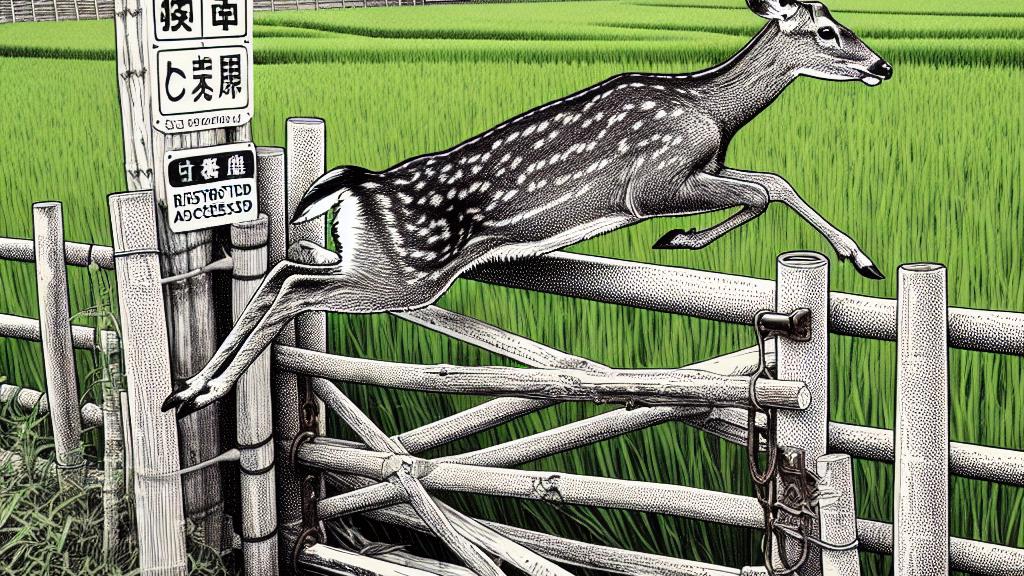Moment Captured: Entering a Restricted Road and Breaking Through a Fence
Overview
- A striking photo captures a daring deer leaping into a rice field, boldly ignoring a 'restricted access' sign.
- The humorous image raises the intriguing question: can wildlife truly comprehend human rules?
- This incident highlights the ongoing battle between wildlife and agricultural interests in rural areas.

The Daring Incident
In Japan, an extraordinary moment was immortalized when a deer was caught on camera making a fearless jump over a fence and into a fertile rice field, completely disregarding a prominent 'restricted access' sign. This captivating image quickly went viral, igniting both laughter and serious conversations online about animal behavior and their interactions with human environments. One curious question springs to mind: does this deer truly understand the concept of prohibited areas, or is it simply guided by its innate instincts in search of food? Such a vivid snapshot not only entertains but also encourages us to delve deeper into the fascinating dynamics between wildlife and the human world.
Deciphering Road Signs
Interpreting road signs can often be a bewildering task for drivers, especially when it comes to distinguishing between a 'no entry' and a 'road closed' sign. Imagine reaching an intersection, feeling puzzled by a daunting 'restricted access' banner, and mistakenly thinking it grants you permission from one direction. This confusion reflects the deer’s unfortunate decision and emphasizes how easily even the most aware drivers can make mistakes. The reality is that these signs—often dismissed as mere decorations—play a critical role in safeguarding both public safety and farmers' interests. Understanding their significance fosters respect for the natural environments surrounding rural roadways and contributes to our responsibility as road users.
Confronting Agricultural Wildlife Challenges
This deer’s audacious leap encapsulates the significant challenges that farmers encounter in protecting their crops from relentless wildlife intrusions. Known for their impressive agility, deer can quickly devastate farmlands if effective prevention methods are absent. Picture an entire herd of these graceful yet destructive creatures invading a cornfield, systematically demolishing crops before dawn breaks! To mitigate such threats, farmers have begun embracing ingenious solutions, such as tall, robust fencing coupled with state-of-the-art auditory deterrents. For example, some have adopted high-tech noise-making devices that replicate predator calls, effectively warding off deer and preserving their hard-earned harvests. This multifaceted approach not only aids in safeguarding agricultural produce but also highlights the delicate equilibrium that must be maintained between wildlife preservation and agricultural success. Ultimately, this incident serves as a potent reminder of the ongoing necessity for innovative wildlife management strategies that benefit both the environment and the farmers who work tirelessly to feed our communities.

Loading...